Ford Puma vs Mazda CX-30 – Kumpi auto sopii sinulle paremmin?
Kaksi autoa, yksi kaksintaistelu: Ford Puma kohtaa Mazda CX-30.
Kumpi vakuuttaa enemmän suorituskyvyssä, kulutuksessa ja hinta–laatusuhteessa? Selvitä nyt!
Ford Puma vs. Mazda CX-30: A Comprehensive Comparison
In the competitive world of compact SUVs, the Ford Puma and Mazda CX-30 stand out as impressive contenders. Both vehicles offer unique features, innovative technology, and refined driving experiences. In this comparison, we will delve into the technical specifications, performance metrics, and innovations that set these two models apart.
Engine Performance and Efficiency
The Ford Puma offers a range of engine options, including petrol MHEV and an electric variant. The power outputs range from 125 to 168 HP, with impressive torque figures of up to 290 Nm. This translates to acceleration times as quick as 7.4 seconds from 0 to 100 km/h, showcasing it as a spirited performer in its class. Furthermore, the Puma boasts fuel consumption figures between 5.4 to 6 L/100km, making it a fuel-efficient option for daily drivers.
In contrast, the Mazda CX-30 is equipped with a petrol MHEV engine that provides up to 186 HP and 240 Nm of torque. While it may not have the same power range as the Puma, it still offers respectable acceleration times, peaking at 8.3 seconds. Fuel consumption for the CX-30 hovers around 5.7 to 6.6 L/100km, which positions it as a competitive alternative in terms of efficiency.
Transmission and Driving Dynamics
Both vehicles come equipped with manual and automatic transmission options. The Ford Puma is particularly notable for its advanced Dual-Clutch Automatic transmission, which enhances responsiveness and improves driving dynamics. Meanwhile, the CX-30 offers a traditional Automatic Gearbox, ensuring a smooth ride, with the added option of All-Wheel Drive for enhanced traction on challenging terrains.
In terms of drive configurations, the Puma is limited to Front-Wheel Drive, while the CX-30 provides the flexibility of both Front-Wheel and All-Wheel Drive, appealing to a wider audience who may seek off-road capability.
Dimension and Comfort
When comparing dimensions, the Ford Puma measures at lengths between 4186 and 4226 mm, while the Mazda CX-30 is slightly longer at 4395 mm. The wider stance of the Puma, at 1805 mm compared to the CX-30’s 1795 mm, may offer a more stable driving experience. Both vehicles come with spacious interiors and can seat up to five passengers comfortably.
In terms of trunk capacity, the Ford Puma leads with options ranging from 456 to 523 liters, allowing for practical storage solutions. The CX-30, although slightly lower with 422 to 430 liters, still provides adequate space for everyday needs.
Interior Technology and Innovations
One of the standout features of the Ford Puma is its incorporation of advanced technology, including the latest Ford SYNC infotainment system that integrates seamlessly with smartphones. It offers various driver-assist technologies designed to enhance safety and comfort.
The Mazda CX-30 does not fall short in the tech department either, featuring the Mazda Connect system which provides a user-friendly interface coupled with premium sound systems. Additionally, its interior design emphasizes quality materials and a driver-focused layout, ensuring a luxurious feel.
Conclusion: Choices for the Modern Driver
Both the Ford Puma and Mazda CX-30 excel in different areas, catering to diverse preferences among compact SUV buyers. The Puma offers a more extensive power range, better fuel efficiency, and versatile interior space. On the other hand, the CX-30 provides a balance of performance, AWD capability, and upscale interior features.
Ultimately, your choice will come down to specific driving needs and personal preferences. Each model brings its own strengths to the table, ensuring that whether you are looking for practicality in the Ford Puma or the refined luxury of the Mazda CX-30, both vehicles are worthy contenders in the compact SUV segment.
Tässä mennään yksityiskohtiin: tekniset erot tarkemmin
Kustannukset ja kulutus: Hinta ja kulutus ovat tärkeimpiä ostopäätökseen vaikuttavia tekijöitä – ja juuri täällä erot usein korostuvat.
Ford Puma on hinnassa vähäinen edullisempi – sen lähtöhinta on 28900 €, kun taas Mazda CX-30 maksaa 29400 €. Ero on noin 540 €.
Polttoaineenkulutuksessa näkyy ero: Ford Puma kuluttaa 5.40 L ja on siten kevyt taloudellisempi kuin Mazda CX-30, jonka kulutus on 5.70 L. Ero on noin 0.30 L /100 km.
Moottori ja suorituskyky: Teho, vääntömomentti ja kiihtyvyys ovat autoharrastajien klassisia mittareita – ja erot tulevat tässä hyvin esiin.
Moottoritehossa Mazda CX-30 on vähäinen etulyöntiasemassa – 186 hv verrattuna 168 hv:een. Ero on noin 18 hv hv.
Kiihdytyksessä 0–100 km/h Ford Puma on hieman nopeampi – 7.40 s vs. 8.30 s. Ero on noin 0.90 s sekuntia.
Huippunopeudessa Ford Puma on kevyt edellä – se yltää 210 km/h:een, kun taas Mazda CX-30 saavuttaa 204 km/h. Ero on noin 6 km/h.
Vääntömomentissa näkyy myös ero: Ford Puma vetää hieman voimakkaammin, 290 Nm verrattuna 240 Nm:een. Eroa on noin 50 Nm.
Tila ja käytännöllisyys: Sisätilat, tavaratila ja kantavuus ratkaisevat auton arjen käytettävyyden. Mukavuus ja joustavuus ovat avainasemassa.
Molemmissa autoissa on tilaa 5 henkilölle.
Omapainossa Ford Puma on vähän kevyempi – 1316 kg verrattuna 1455 kg:een. Painoero on noin 139 kg.
Tavaratilan koossa Ford Puma tarjoaa jonkin verran enemmän – 523 L verrattuna 430 L:een. Ero on noin 93 L.
Maksimikantavuudessa Mazda CX-30 pärjää melkein huomaamaton paremmin – jopa 1406 L, noin 123 L enemmän kuin Ford Puma.
Kantavuudessa Mazda CX-30 on vähäinen parempi – 496 kg verrattuna 469 kg:een. Ero on noin 27 kg.
Kokonaisuudessaan Mazda CX-30 on on ylivoimainen ja nappaa näin DriveDuel Champion -tittelin.
Se vakuuttaa tasapainoisemmalla kokonaisuudellaan ja on käytännöllisempi kumppani arjessa.
Ford Puma
Ford Puma on saanut runsaasti huomiota upealla muotoilullaan ja käytännöllisillä ominaisuuksillaan. Sen kompakti koko yhdistää mukavasti energisen ajokokemuksen ja tilavat tavaratilat. Tämä auto on täydellinen valinta kaupunkiajoon, yhdistäen tyylikkyyden ja toimivuuden saumattomasti.
Tiedot @ puma.fordpresskits.com
@ puma.fordpresskits.com
 @ puma.fordpresskits.com
@ puma.fordpresskits.com
 @ puma.fordpresskits.com
@ puma.fordpresskits.com
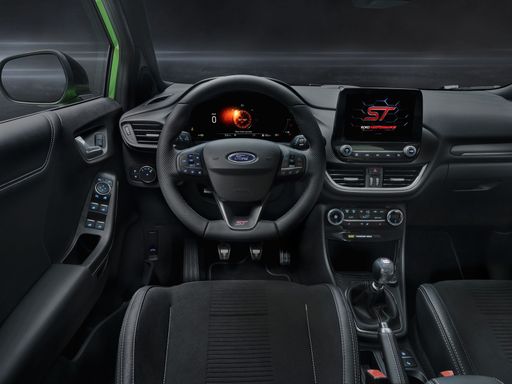 @ puma.fordpresskits.com
@ puma.fordpresskits.com
Mazda CX-30
Mazda CX-30 yhdistää tyylikkään ulkonäön ja huipputeknologian, mikä tekee siitä erinomaisen valinnan kaupunkiajoon ja pidemmille matkoille. Sen tilava sisustus ja korkealaatuiset materiaalit tarjoavat mukavuutta ja käytännöllisyyttä kaikille matkustajille. Suzukilla on taito kehittää autoja, jotka ovat sekä nautinnollisia ajaa että ympäristöystävällisiä.
Tiedot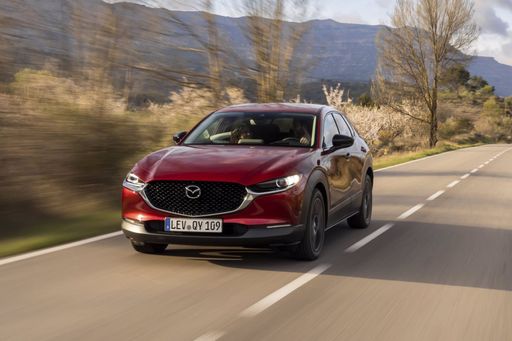 @ de.mazda-press.com
@ de.mazda-press.com
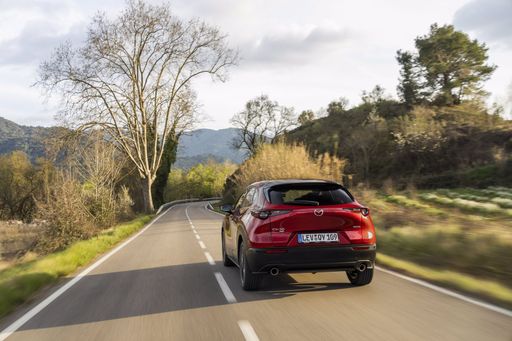 @ de.mazda-press.com
@ de.mazda-press.com
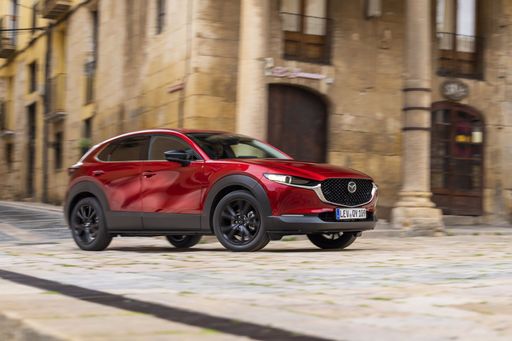 @ de.mazda-press.com
@ de.mazda-press.com
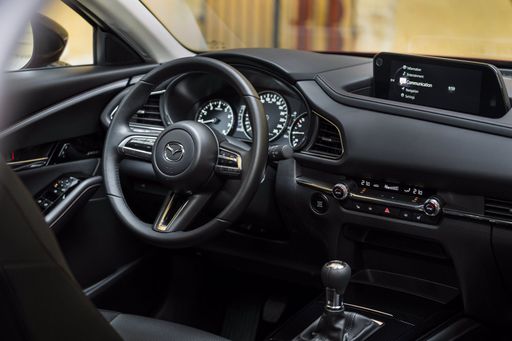 @ de.mazda-press.com
@ de.mazda-press.com

|

|
|
|
|
Kustannukset ja kulutus |
|
|---|---|
|
Hinta
28900 - 42400 €
|
Hinta
29400 - 42900 €
|
|
Kulutus L/100km
5.4 - 5.9 L
|
Kulutus L/100km
5.7 - 6.6 L
|
|
Kulutus kWh/100km
13.1 - 13.9 kWh
|
Kulutus kWh/100km
-
|
|
Sähköinen toimintasäde
361 - 376 km
|
Sähköinen toimintasäde
-
|
|
Akun kapasiteetti
43 kWh
|
Akun kapasiteetti
-
|
|
CO2
0 - 135 g/km
|
CO2
129 - 148 g/km
|
|
Polttoainesäiliön tilavuus
42 L
|
Polttoainesäiliön tilavuus
48 - 51 L
|
Mitat ja kori |
|
|---|---|
|
Kori
SUV
|
Kori
SUV
|
|
Istuimet
5
|
Istuimet
5
|
|
Ovet
5
|
Ovet
5
|
|
Omamassa
1316 - 1563 kg
|
Omamassa
1455 - 1587 kg
|
|
Tavaratila
456 - 523 L
|
Tavaratila
422 - 430 L
|
|
Pituus
4186 - 4226 mm
|
Pituus
4395 mm
|
|
Leveys
1805 mm
|
Leveys
1795 mm
|
|
Korkeus
1550 - 1555 mm
|
Korkeus
1540 mm
|
|
Maksimi tavaratila
1216 - 1283 L
|
Maksimi tavaratila
1398 - 1406 L
|
|
Kantavuus
367 - 469 kg
|
Kantavuus
458 - 496 kg
|
Moottori ja suorituskyky |
|
|---|---|
|
Moottorityyppi
Sähkö, Bensiini MHEV
|
Moottorityyppi
Bensiini MHEV
|
|
Vaihteisto
Automaatti, Manuel
|
Vaihteisto
Manuel, Automaatti
|
|
Vaihteiston tyyppi
Alennusvaihteisto, Manuaalivaihteisto, Kaksoiskytkin automaatti
|
Vaihteiston tyyppi
Manuaalivaihteisto, Automaattivaihteisto
|
|
Vetotapa
Etuveto
|
Vetotapa
Etuveto, Neliveto
|
|
Teho hv
125 - 168 hv
|
Teho hv
140 - 186 hv
|
|
Kiihtyvyys 0-100 km/h
7.4 - 9.8 s
|
Kiihtyvyys 0-100 km/h
8.3 - 10.3 s
|
|
Huippunopeus
160 - 210 km/h
|
Huippunopeus
191 - 204 km/h
|
|
Vääntömomentti
170 - 290 Nm
|
Vääntömomentti
238 - 240 Nm
|
|
Sylinterien lukumäärä
3
|
Sylinterien lukumäärä
4
|
|
Teho kW
92 - 124 kW
|
Teho kW
103 - 137 kW
|
|
Iskutilavuus
999 cm3
|
Iskutilavuus
1998 - 2488 cm3
|
Yleiset |
|
|---|---|
|
Mallivuosi
2025
|
Mallivuosi
2025
|
|
CO2-tehokkuusluokka
A, D
|
CO2-tehokkuusluokka
D, E
|
|
Merkki
Ford
|
Merkki
Mazda
|
Onko Ford Puma saatavana eri vetotavoilla?
Mallia tarjotaan Etuveto-versiona.
Näytetyt hinnat ja tiedot ovat arvioita, jotka perustuvat Saksan listahintoihin, ja voivat vaihdella maittain. Nämä tiedot eivät ole oikeudellisesti sitovia.
